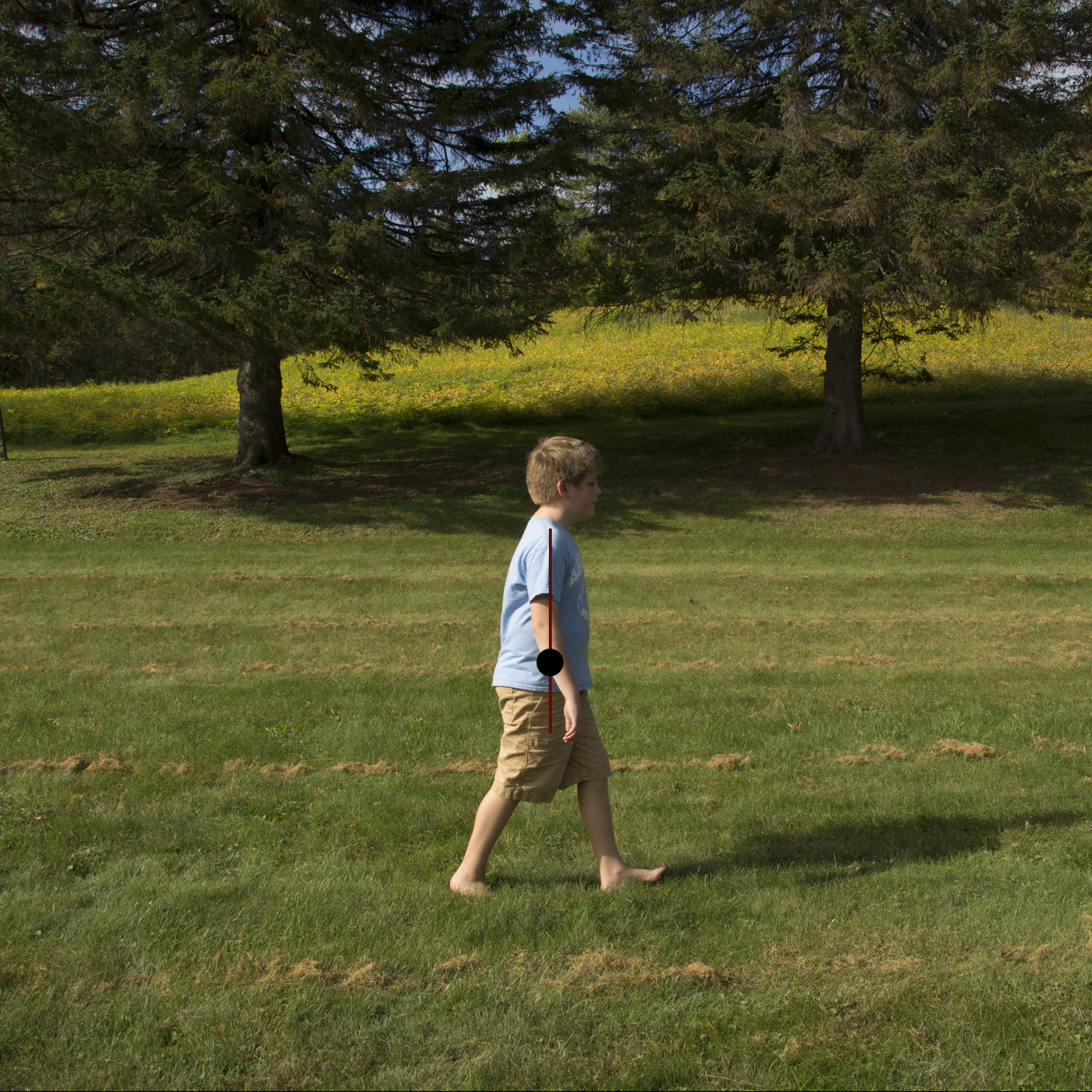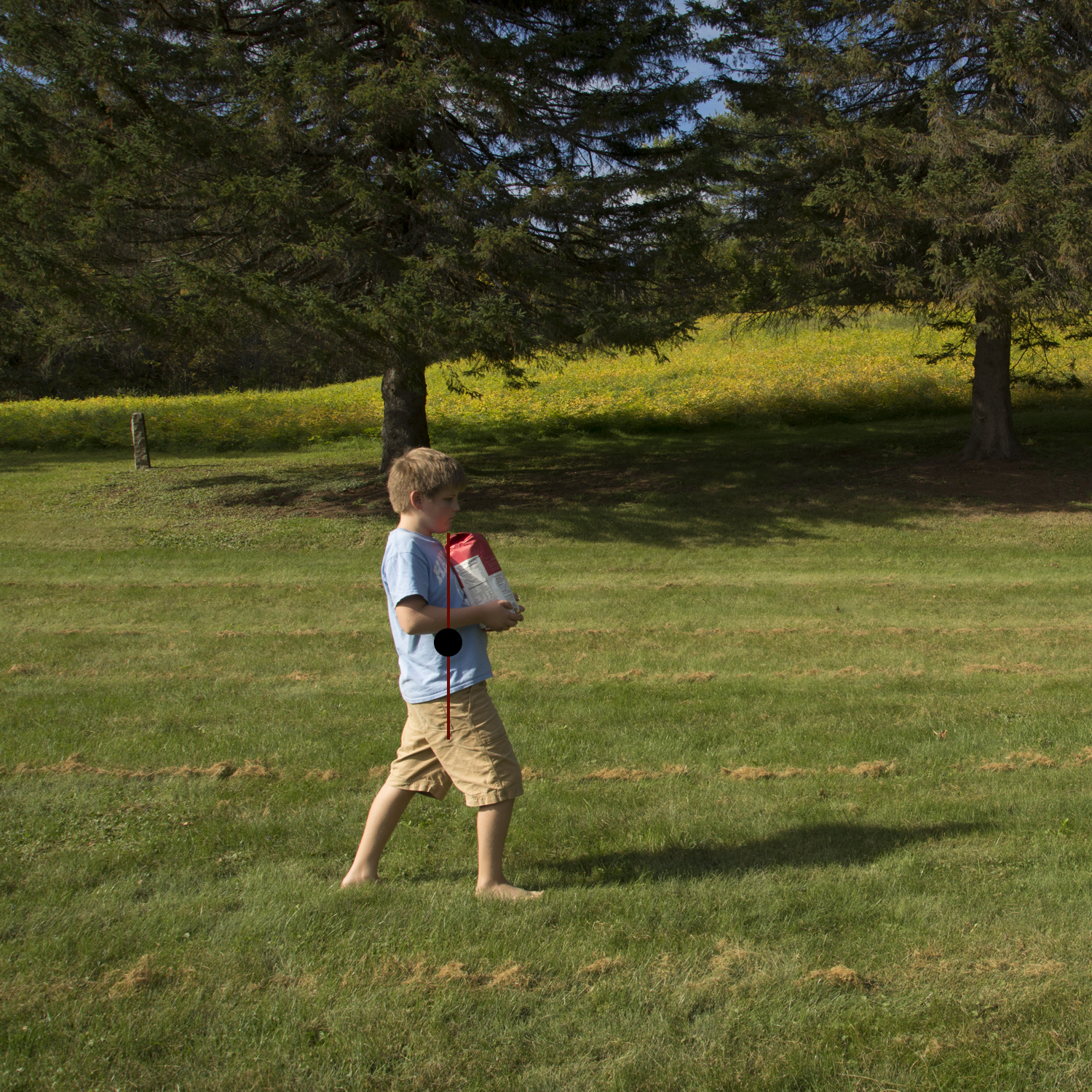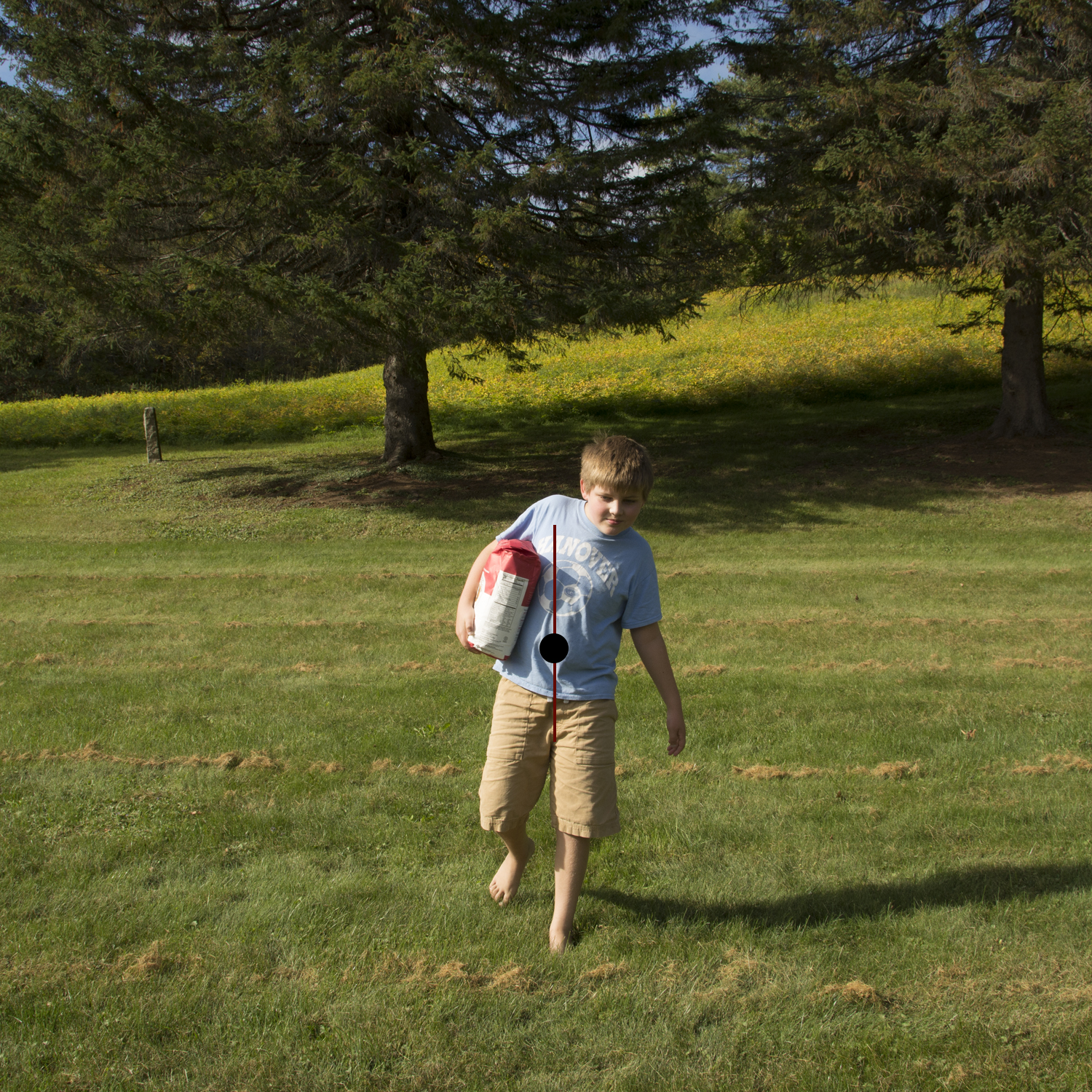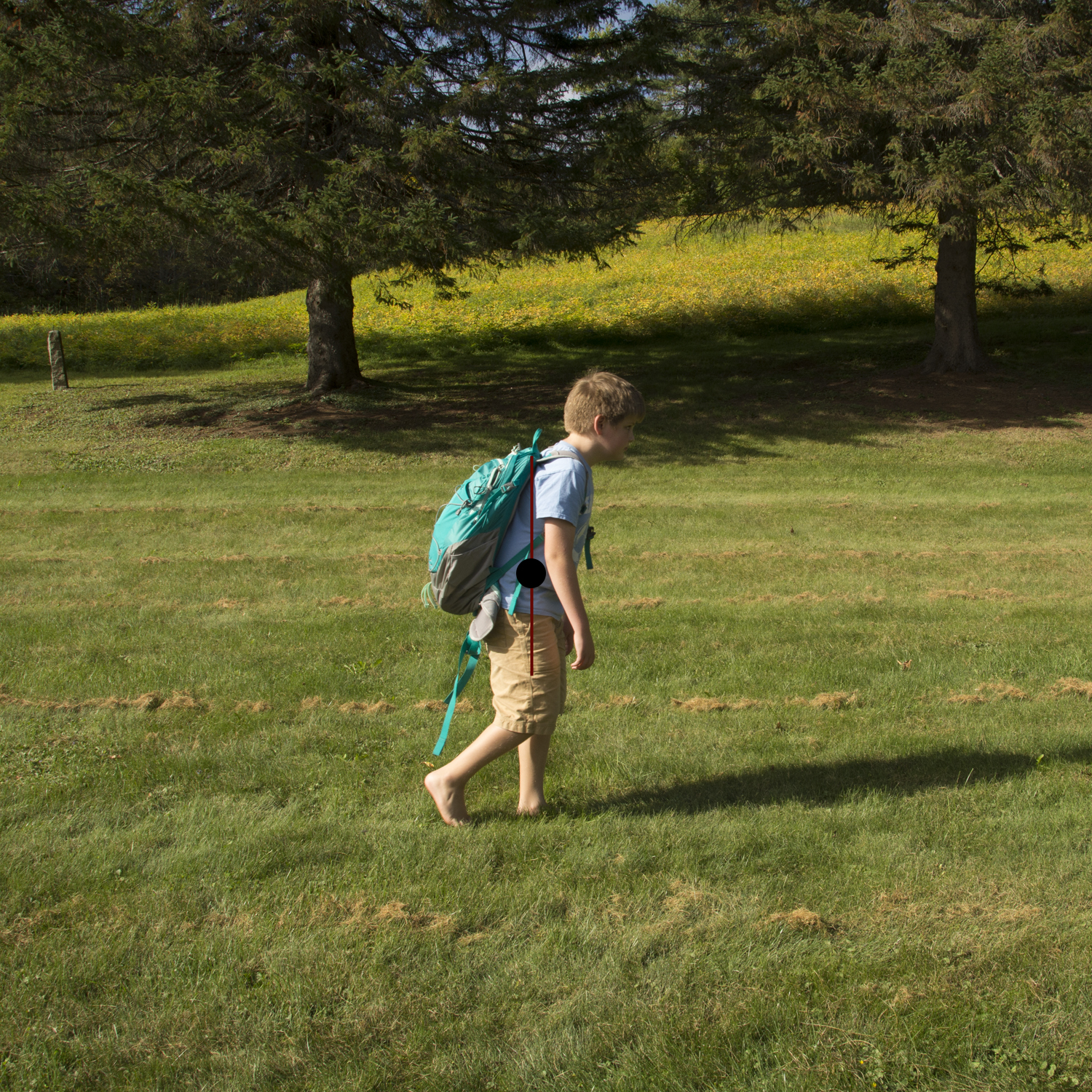Definitions
Before we can understand why things move the way they do, we need to define some words, most of which you have heard before.
Angle
This car has a velocity of 30 miles/hour north.
Angular Speed
This dog, walking her owner, has a velocity of 3 miles/hour south.
This policeman is reporting on a car he is chasing. The officer at the station wants to know the car's velocity, not just its speed!
There's a difference between velocity and speed.
Angular Velocity
The scooter travels at constant velocity since it covers the same distance in the same direction each second.
Here the white arrows show that you go about 3 ft each second. Since the distances are the same and they point in the same direction, they tell us that you and your scooter are traveling at constant velocity. Vectors, like these arrows, are also used to represent distance. Their length tells how far something moves and they point in the direction of travel.
Note that instead of showing multiple images of something or someone moving at constant velocity, you can just show one image and use a vector to label the velocity. Here we are using the shorthand notation "v" for the velocity, but you can call it by another name if you like.
We can use one vector to show velocity.
Angular ACCELERATION
We know that if you are traveling at constant velocity, you will travel the same distance, in the same direction, each second. What if you travel different distances each second? When this happens, your velocity is changing and you are accelerating. Acceleration is a measure of how much the velocity changes each second (or each minute or each hour). Have you ever heard car advertisements saying that a car can go from 0 to 60 miles/hour in 10 seconds? These advertisements are reporting on the car's ability to accelerate. That is, the car's velocity can change from 0 to 60 miles/hour in 10 seconds. Like velocity, acceleration has a direction associated with it.
This truck is accelerating because it covers more distance each second than it did the previous second.
A car needs to accelerate when it gets on a highway. Its velocity must increase from about 10 miles/hour up to about 60 miles/hour. The car has to cover more ground each second than it did in the previous second, as you can see for the truck. Here, the arrows show how far the truck moves each second. This is another example of using an arrow (vector) to show the distance traveled. The length of the vector indicates the distance and the direction shows.... what else but the direction of travel!
You can show acceleration using a vector with the letter "a" alongside it.
Another way to show the acceleration of the truck is to just put a vector on one of the images. If the letter "a" is alongside the vector, it means that the truck is accelerating.
Another kind of acceleration is when the speed decreases and the direction doesn't change. This happens when you squeeze the brakes on your bike. When you squeeze the brakes, you are trying to change your velocity from, say, 5 miles/hour down to 0. In other words, you are trying to stop! You will travel less distance each second than you did the previous second. This kind of acceleration is called a negative acceleration or sometimes, a deceleration. While you are moving, the direction of a negative acceleration is opposite the direction of your velocity.
There's a negative acceleration when you are stopping on your bike.
How about this one: A record on a turntable spins at constant speed, so is there an acceleration? To understand the answer, place a button somewhere on the record and watch it go around. As you do, imagine a measuring tape affixed to the side of the turntable.
The button travels at constant speed but its direction is changing, so it is accelerating.
Torque
The third important word that helps describe motion is force. Whenever you are pushing or pulling something, you are applying a force. Sometimes we say that you are exerting a force. Like velocity and acceleration, force has a direction, so we can use an arrow to represent it. The arrow points in the direction of the force and the length indicates how big it is (or how strong it is).
Pulling is a force.
Pulling is a force.
Pushing is a force.
Pushing is a force.
Lifting is also a force, as is friction. We will talk about both of these forces later.
Force is measured in pounds - just like weight! We will soon learn that your weight is the earth pulling - or exerting a force - on your body. Force is also measured in Newtons. Isaac Newton was an early force in figuring out how to describe motion, so it is only fitting that his name be used as a unit of force!
The concept of force is very important for understanding motion. There are lots of different forces in the world and they work together to make things move a certain way.
Moment of Inertia
One way to measure mass is with a balance scale.
Your weight is a measure of the earth pulling on your body. It has a direction: straight down toward the center of the earth. Your weight depends on how much matter is inside your body (that's your mass) but it also depends on the size of the earth - or the size of whatever planet you live on. If you lived on a smaller planet than the earth, that planet would exert a smaller force on you than the earth does. If you lived on a bigger planet, that planet would exert a bigger force. Your mass - how much matter is contained in your body - would be the same on the earth, the smaller planet or the bigger planet. Your mass is the same, no matter where you live!
Suppose you weigh 100 pounds on earth. Because the moon is much smaller than the earth, your weight would be less on the moon. In fact, it would be about 1/6 your weight here on earth, or 17 lb. Your mass, however, would be the same on the earth or on the moon.
Mass is measured in grams or kilograms and some people like to measure mass using a unit called the slug! Mass is measured using a balance scale. When the scale is balanced, the same amount of matter is in the trays on either side. In the picture above, the mass of the squash is 880 grams. You can imagine that the scale would balance - or give the same reading - on the earth or on the moon. The squash weighs about 2 pounds on earth but only about 1/3 pound on the moon.
Center of Mass
Speaking of mass, there is an important concept that we should mention at this point. It is called the center of mass and it is very helpful in describing motion. For a baseball, for example, imagine that all of the mass of the baseball is concentrated at a single point, right at the center. If you throw a baseball to your friend, you can describe its motion as the motion of the point at its center. Of course if you give the ball a spin before you throw it, the spin can't be represented this way. But the path that the ball follows can. For this reason, lots of kinds of motion are described by imagining that the entire mass of an object is at a point at the object's center of mass.
Where is your center of mass? Depending on the shape of your body, it is somewhere on a vertical line that passes through the middle of your hips and shoulders. Half of your mass is in front of this line and half is in back. The actual center of mass is a point on this line where half your mass is above and half is below. If you look from the front, the center of mass has half of your mass to the left and half to the right. For you to walk comfortably, your center of mass should be somewhere on this line. An approximate location is shown in the picture above on the left.
Suppose you have to carry a sack of flour that has a mass of 4.5 kilograms (or 10 pounds on earth). If you carry the flour in front of you, your body tips back to balance the extra mass you are carrying. Tipping your body back keeps half your combined mass (you plus the flour) in front of the vertical centerline and half in back of it. It keeps your center of mass, which is always on that centerline, over your hips so that you can walk. Your center of mass shifts up a bit because of the extra mass you are carrying above your waist.
Now suppose you carry that same sack of flour on your right hip. Your body tips to the left side to offset the extra mass you are carrying. The vertical centerline now has half your combined mass on either side of it and your new center of mass is over your hips.
And we all know what happens if you put the sack of flour in a backpack! It is like carrying a bunch of books and food with you to school. Your body tips forward when you walk so that half your combined mass is in front of the centerline and half is in back. This allows your center of mass to be positioned on that centerline so that you can walk comfortably.
And where's the center of mass for a hula hoop? It is right in the middle of the hula hoop, where there isn't any mass! In other words, you don't need to have any mass at a center of mass!
We now have the basic building blocks to understand how things move. What is needed now is an idea of how these things - velocity, acceleration, force and mass - are related to one another.















